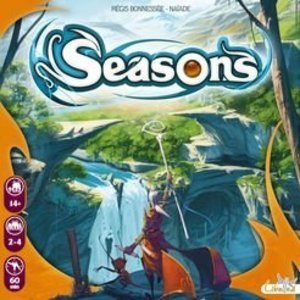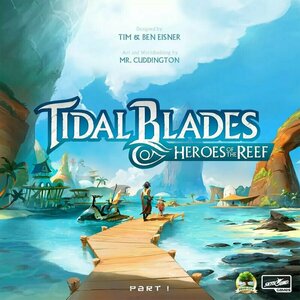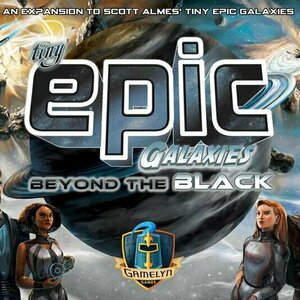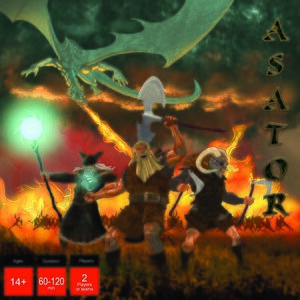
Roar and Write!
Tabletop Game
It’s time for the Selection Committee of the Animal Kingdom to choose the new monarch to rule over...
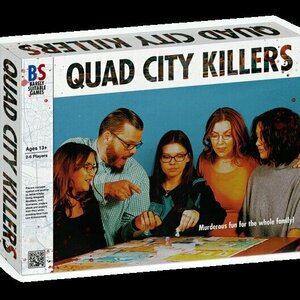
Quad City Killers
Tabletop Game
Quad City Killers: Murderous Fun for the Whole Family! QCK is created in the style of an 80s...
Entertainment Editor (1988 KP) rated Xia: Legends of a Drift System in Tabletop Games
Mar 8, 2018
Ultimately, Xia’s dice rolling and the inherent meanness of blowing up your rivals and disrupting their turns, will be deal breakers for some. But if you invite people into your sandbox that won’t take themselves too seriously, there are plenty of toys to go around. I highly recommend you pick up Xia Legends of a Drift System.
Original Score: 4.4/5
Reviewer: John Severn
Read the full review here: https://www.gamesquest.co.uk/blog/xialegendsofadriftsystem/
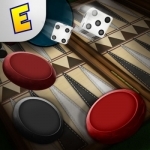
Backgammon Deluxe Free
Games
App
Backgammon Deluxe Free is an excellent version of one of the oldest two player dice board games....
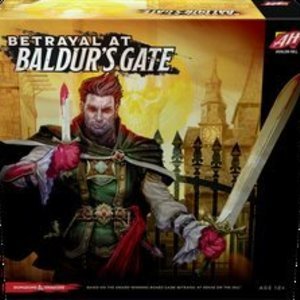
Betrayal at Baldur's Gate
Tabletop Game
Description from the publisher: The shadow of Bhaal has come over Baldur's Gate, summoning...
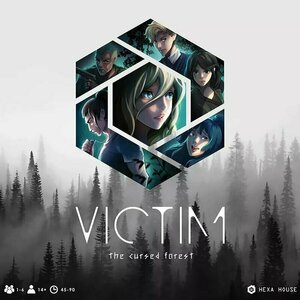
Victim: The Cursed Forest
Tabletop Game
Victim, a horror board game that lets players help each other to find a way out by cooperatively...
Purple Phoenix Games (2266 KP) rated Seasons in Tabletop Games
Jul 6, 2019 (Updated Nov 4, 2021)
Seasons is a fantastical dice rolling, card drafting, hand management game for two to four players. In it, players are sorcerers competing in a legendary magical tournament that spans three years in an attempt to be crowned the next Archmage of the kingdom. As the seasons change, sorcerers may draw power from changing mana sources, and utilizing these sources most efficiently and effectively will earn victory over all. So tighten up your belt and get to casting, young mage!
To setup, follow the rules in the rulebook (there are many steps, and I have feeble and weak fingers) until the table looks somewhat similar to the photo below – except for the obvious oversight in placing the orange cube on the zero space of bonus actions. The main areas of interest are the main game board where the years and seasons are tracked, the Crystal score track, and player board/tableau area. Players will be dealt a hand of nine cards to start, and then draft one card at a time, passing to their neighbor each time, and deciding which three cards they would like to start the game with, and assigning three more cards each into the Library for rounds two and three. The game begins in Winter, and the black cube is placed on the number 1 of the seasons board. The game is now setup and ready to begin with the first player!
Each turn the active player will roll all dice in the current season (this game is setup for two players, so three total dice are used each turn). They will choose one die to use for the turn, and other players will choose theirs. The players then gather the resources present on the die face. These could be element tokens, crystals (VP), summon gauge stars, cards drawn from the deck, or even transmutation powers. Once resources are gained, the active player may then choose to play a card from their hand to their personal tableau, given they have adequate summoning power (the number of cards that can be played) available on their board. The cost to play the card is found under the illustration, and is usually paid in crystals, element tokens, or a combination of both. These Power Cards may allow the player immediate benefits, ongoing benefits, or benefits that may be activated at certain times during the game.
Another option players have from their chosen die is the ability to transmutate. When a player chooses a die with this option, they are able to consult the current season on the main board and exchange element tokens for crystals, depending on the provided exchange system. For example, a player wishing to exchange earth tokens (the green plant) during Winter will be provided with three crystals each, while attempting the same transmutation during Spring will only provide one crystal each.
Once each player has taken their turn to collect their resources, complete their turn actions, and pass onto the next player, the unchosen die is resolved. Each die face also shows a number of dotted pips at the bottom. The number of pips shown on the unchosen die refers to the number of spaces the cube on the main board season tracker is to be moved forward around the board. One pip, one space forward. This could result in the current season continuing or progressing into the next season. When the cube progresses from Fall to Winter, players will collect their cards set aside for year two or three, respectively. These cards are added to their hand and available to be used immediately on their turn. If, however, on their turn a player has little they can do, or simply wish to boost their turn, they may use one of four bonus actions, as printed on their player board. These actions allow the player to trade two element tokens from their reserves for any other two element tokens from the main supply, allow transmutation if the symbol is not present on their chosen die face, increase their summoning gauge by one, or draw two power cards from the deck and choose one to add to their hand instead of drawing one, per their die face. Each player can use three total bonus actions for each game at a cost of crystals for each usage. Certainly a trade-off.
Play continues in this fashion of choosing and resolving dice, playing cards, and transmuting tokens for crystals until the cube has completed its three year journey around the main board. At that time crystals are scored from cards and added to the tracker, with five points deducted for each card remaining in hand and points deducted for the usage of bonus actions. The player with the most crystals at the end of the game is the winner!
Components. I have a lot to say here, but will attempt to be as succinct as I can. The components in Seasons are simply phenomenal. Yes, the boards, cards, and cubes are all fine quality and unimpressive. However, the art style throughout the game and those big chunky dice are the real standouts to me. I mean, who DOESN’T like to roll big, chunky dice? And the player colors? Oh man, I love them! Players can choose orange, purple, gray, or lime green. Those are some great color options, and such a simple upgrade from primary colors used on many other games. The dice are primary colors, but I still enjoy them and I will let it slide. No real complaints on components from me. I have heard complaints about people not vibing on the color choices associate with the elements/energy, but I applaud the mold-breaking here. Why can’t Fall be red and associated with a feather? Why can’t Summer be yellow and associated with a flame? Fire doesn’t always have to be red. Go on, Seasons! Be you!
Our thoughts on each game should never be a surprise. I will say this for Seasons – I believe that when I auctioned it off the first time, part of the reasoning was because I did not fully understand the rules. I was a newer gamer at the time and was lured in by colors and art style (which are still stunning). More than likely I thought I was smarter than I truly am and included all the cards in my first plays instead of heeding the suggestions given by the rulebook for easier first games. Now, being a more seasoned (I couldn’t resist) gamer, I can better appreciate what is in this box. The unique card play, the dice drafting for resources and actions, the progression of time as a result of the rejected die, all come together to make a very solid and different game. I am trying to think my way through my collection to find a parallel that uses all these mechanics together as well as Seasons does and I am finding it difficult. It is so easy to just throw mechanics into a blender and see the goo that results, but everything with Seasons feels right and I am just in love.
Why did I ever get rid of Seasons? I will claim young and dumb, though I wasn’t very young. Do not emulate my decision to shed this one out of your collection. You don’t have a copy? I would recommend visiting your FLGS to see if they might have a copy in stock. It’s a great one, and one that I will treasure from here on out. Purple Phoenix Games officially gives this one an amazingly colorful 5 / 6. I know the others will enjoy it too, but until they play it, I will be giddy with excitement each time I am able to play my copy. Why are you still here? Go get Seasons!
Purple Phoenix Games (2266 KP) rated Tidal Blades; Heroes of the Reef in Tabletop Games
Apr 20, 2021
DISCLAIMER: As this game is a giant and many reviewers are starting to tackle it using multiplayer rules, I decided I would talk about the differences between multiplayer and solo rules. This review is using the included Solo Mode rules.
Setup for the Solo Mode uses most of the setup rules for the multiplayer game with a few exceptions. In the Solo Mode the player will have one character to control and one Rival to beat. The Rival will need their player board and standee or mini (I have the Deluxe Edition, so it’s minis in my case). In addition, the player will also choose two other characters to be Allies, utilizing their ability cards and minis. The Allies and Rival will be placed on the Champion board ahead of the player to begin the game. The player wins by having more points than the Rival at the end of the game.
Quickly, here is Tidal Blades in a nutshell. Players are attempting to gather the greatest standing on the Champion board (like a VP track) and VP from Challenge cards gained. The players earn these cards by using Actions to move to islands, gather resources, fight monsters, perform boating maneuvers and tricks, and can increase the potential for each of these by upgrading their central board dials. Shells and Fruit are common resources, and each player starts with two Actions per turn. The game lasts four total Days (or phases with several turns in each), and players earn more Action discs on Day two and four. Every time the dice are rolled to complete Challenges a Danger Die is also rolled and can wound the player by forcing a discard of dice. Each Day players can refresh and upgrade used dice to better their skill and concentrate their abilities. After Day four the game ends and players count up points to declare a victor!
Here is how gameplay is slightly different from the multiplayer experience. The Rival always goes first. They will also have one more Action disc to use on their turn (unfair, right?). When they begin their turn, a Challenge card is drawn. Whichever Island is featured on the card is to where the Rival will travel. Once arrived, the amount of VP awarded on the card is how many spaces from the top of the Island the Rival will be placed. Depending upon which Island the Rival ends the Challenge card will then be placed under the Solo Mode mat and a special action taken. The special actions could be revealing and resolving a Plot card in Droska Ring (special to Solo Mode), removing Monster hits from the Fold in the Chronosseum, or moving the boat in Lamara Stadium. The Judge location also plays a role in special actions should the Rival land on the same Island as they are. Other special goodies await, but I will leave you to discover those.
On the player’s turn, if the player is tied with or ahead of their Allies on the Champion board, the player will be able to use the Allies on their turn. This is handled similar to having an extra Action disc on the player’s turn. Send the Ally to a location and reap the rewards. Otherwise, for the player, turns are the same.
Components. Let me tell you: if you have the extra money to splurge for the Deluxe Edition, DO IT. The minis are amazing, the plastic shells are awesome, and those squishy fruit are so perfect! Obviously the game is perfectly playable and enjoyable with the basic components, but the improved bits are really something special. The cardboard everything is great, the GameTrayz inserts are incredible, and the art and colors are simply magical. I cannot say enough excellent things about what comes in this massive box. Druid City Games and Skybound Tabletop got everything right with this one.
It should be no surprise that I am in love with this game. Yes, it’s a Solo Chronicles, and I played by myself. I get that. Eventually I will be able to play this with others and by then I will be so engrossed in the lore that I will have no problems hyping up my playmates. Tidal Blades is an absolutely gorgeous game with so much going on that I don’t think I will ever tire of it. The game lasts four days but I wish it were a month because I just want to keep playing! The decisions to be made are all wonderfully delicious and there always seems to be too few on your turn. Yes, I know that sounds like all worker placement games, but it is especially true here. Almost every spot on the board gives immediate benefits that can be used, so even when a location is occupied, there will always be another of equal importance to your character. It’s so good.
Like I said before, I love the art and colors used. This is a stunner of a game on the table. It does take up quite a bit of room, especially if you use the arena dice tray (which I didn’t because I play at night when the kids are asleep and a hard plastic dice tray wakes up children). I count myself lucky to have the Deluxe Edition as well because those upgraded bits really make the game feel deluxe and fancy.
The Solo Mode is very good, and at least for me, very difficult to win. The combination I used for this review was playing as Axl against my Rival Caiman. Obviously switching out characters and using different Allies will change up the feel a bit, and I really cannot wait to try out all the permutations. When a game begs you to play it as often as you can and you look at it lovingly on your shelf, you know you have a Top 10 game, and a treasure in your collection.
Purple Phoenix Games (2266 KP) rated Tiny Epic Galaxies: Beyond the Black in Tabletop Games
Mar 11, 2022
This review is a breakdown of the Beyond the Black expansion for Tiny Epic Galaxies. Beyond the Black introduces several new components to the game: Pilot cards, Hangars, and Exploration cards. To set up for a game with the expansion, things are done as normal with a few additions. The deck of Pilot cards is shuffled, and a market is created above the row of Planet cards. Each player receives a Hangar mat with 4 Advanced Ships, and the Exploration cards are shuffled and placed face-down on the Exploration mat. A handful of new Planet and Secret Mission cards are included in this expansion, and are shuffled into their respective decks. Pictured below are some of the expansion components.
The gameplay with the Beyond the Black expansion is essentially identical to that of the base game, with two new action options. On your turn, when you have rolled your dice, you have the option to Hire Pilots. These Pilots will take control of an Advanced Ship from your Hangar mat, and will provide special and powerful abilities in the game. In order to Hire a Pilot, you must pay the dice cost for the specific type of Advanced Ship for which you are hiring. Take the Pilot card and place it on your Hangar mat, on the corresponding Advanced Ship. You then replace one of your normal ships with the new Advanced Ship, to be used throughout the rest of the game. Not all Pilots can control every ship, so you have to strategize on which Pilots to hire.
The other new action option is Exploration. On your turn, when you roll a “Move a Ship” action, you may move a ship to the Exploration mat. Exploring uncharted space could result in helpful discoveries (gaining resources) or dangerous consequences (usually losing resources). Once on the Exploration mat, you have the option to take any face-up card from the Exploration row, if there are any, or you have the option to reveal the top card of the Exploration deck. If you reveal the top card and it is a green Discovery card, you may choose to take it and reap the rewards, or you can choose to push your luck and draw another card hoping for something better. If you draw a red Danger card, you must immediately take it and suffer the consequences, thus ending your turn. The Exploration row can only ever have 3 face-up cards at a time, so knowing when to push your luck or when to take a safe card is key.
The game continues in the normal fashion, with these additional actions, until a player has earned 21 or more VP. Along with the base game VP, the expansion allows players to earn VP for hired Pilots and Exploration cards. When the game end is triggered, players will then score their Secret Mission cards and VP earned from Exploration cards, and the player with the highest total is declared the winner!
Official recommendation: If you’ve read our review of Tiny Epic Galaxies, and it’s newest iteration, Tiny Epic Galaxies Blast Off!, then you’ll know that we absolutely love this game. The gameplay is excellent, the theming is on point, and the mechanics are engaging. That being said, is the Beyond the Black expansion necessary? If you, like us, are serious fans of the base game, I would say yes. This expansion builds upon the great elements of the base game, and provides even more opportunities for strategy in your gameplay. Should you hire this Pilot now, and for which Advanced Ship? You’re allowed to replace Pilots in future turns, but what if you replace someone and then regret it? How far are you willing to push your luck to Explore uncharted space? The benefits are nice, but the consequences can be brutal. The gameplay is elevated by the inclusion of these new elements, and is not bogged down by unnecessary additions. When first introducing this game to people, I would probably just use the base game to build an understanding of the gameplay. But beyond that (see what I did there?), I would highly recommend grabbing a copy of the Beyond the Black expansion to include in your future plays of this awesome little space game.
Purple Phoenix Games (2266 KP) rated Asator in Tabletop Games
Oct 20, 2020
Asator is a head to head (or teams) game of troop maneuvering and attacking using 30 identical miniatures on each side. Each mini acts as a platoon of three different kinds of armies, plus a Chieftan, Master, Wizard, and Dragon that all have different special abilities. The winner of Asator is the player who can eliminate their opponent’s leadership (Chieftan, Master, and Wizard).
DISCLAIMER: We were provided a prototype copy of this game for the purposes of this review. These are preview copy components, and I know that the final components will be slightly different from these shown. Also, it is not my intention to detail every rule in the game, as there are just too many. You are invited to download the rulebook, back the game through the Kickstarter campaign, or through any retailers stocking it after fulfillment. -T
To setup, place the battle mat on the table, and then players will place groups of minis on the field within the closest three rows of hexes in alternating turn fashion. Players will also take the two large Battle Sheets and a dry-erase marker to keep track of every one of their minis’ stats throughout the game. Each player will also choose five of the given 10 Wizard spell cards to use for the game, and each spell may only be used once during the game. Once all army minis are placed, the first player will move up to 20 units on the battlefield and attack opponent armies if possible. The game is now on and decimation is the goal.
Each mini type corresponds to a different group of armies, plus the dragon and three leader pieces. All armies of the same type have the same stats for movement, hit points (HP), armor rating (AR), and attack weapons. Also each mini is labeled on the bottom so keeping track of each unit is made a little easier. Obviously the leader pieces are more powerful and each has a special style of combat. The Master wields an axe and shield (which is broken after one hit) to increase AR and dole out the damage. The Chieftan wields a spear, twin axes, a bow, and a shield. Similar to the Master, the Chieftan’s shield is broken after an attack against him, and his spear is broken after a missed attack. The Wizard is not at all strong in melee, but has powerful spells at his disposal to be used for the disposal of enemy units.
Besides the leadership trio each side also brings a Dragon to the battle. Dragons can move slowly by land, but quite quickly by air. Once in the air he or she may deliver a Fire Blast that causes huge damage, but then the Dragon must ground themselves to regain stamina for flight. In addition, each player will have access to Cavalry, Infantry, and Bowmen, each with their own stat blocks and abilities.
This is all well and good, and is somewhat similar to the strategy one would use in Chess. Combat, however, is much more involved than that of simply moving into an enemy’s space and automatically overtaking it. In Asator combat victory is decided via a VERY pared down version of D&D combat. It uses a simplified d20-based attack versus the enemy Armor Rating (AR). Rolls over the AR of the enemy is a success and damage is dealt. Done. Some attacks require a roll of 2d6 for damage amount, like spells and Dragon attacks. That said, combat is decided using 1d20 and 2d6. That’s it.
The game continues in turns where the first player will move their pieces and attack, and then the next player will do the same until one player has defeated all three enemy leaders and earned the title of Asator – Master of War.
Components. Again, we were provided a prototype copy of the game, but most of the components are what will be received when the game is backed or purchased. That said, the game utilizes a cloth battle mat that folds into the box, four dry-erase Battle Sheets, two dry-erase markers, dice for both players, Wizard spell cards for both players, and 60 miniatures. The battle mat is great fabric quality with minimal art that doesn’t get in the way of play (much appreciated). The dry-erase components are good. The card quality is fine. The dice are black and white dice to correspond with players using the black or white minis, and are of normal quality. The minis are great and I enjoyed playing with them.
Now for the negatives of what is included in the box. First, the art. Now, there is very minimal art used throughout the game. It’s just not a focal point, and it shows in the game’s production. I found the sketch on the cover of the rule book (which is the same as the watermark on the Battle Mat) to be very cool, but the box cover art leaves some to be desired. Similarly, the Wizard spell cards use very generic-looking art icons with text for explanation. I am most certainly being hyper-critical here because flashy art on these components are certainly not needed to play or highly enjoy the game. For my tastes, though, I would like to see more polished art on these pieces as the art is so sparse throughout.
But how does the game feel? It’s truly quite good. I don’t play many wargames or 1v1 skirmish style games, so to present me with something like this and for me to enjoy it as much as I have has to be a sign of something good. Again, I am no strategic war general, but being able to employ different strategies every game is exciting. Testing out the different combinations of Wizard spell cards is fun for a tinkerer. And, of course, playing with a bunch of minis is always good fun.
There is a good game here, and I absolutely love the combination of Chess maneuverability with the simplified RPG d20 battle system. It works well in a game like this where each piece owns a stat block of which players will need to be mindful. I didn’t quite mention my favorite part of the rules yet either: natural 20 on a combat roll equals insta-death. Yes, even to the Dragon, which happened in my very first game. THAT is a cool rule that tripped up tactics quite often in my plays.
All in all this game is a great example of combining a couple sets of mechanics that wouldn’t be expected and creating a great gaming experience from them. I invite you to back the game on Kickstarter when it goes live if you are looking for that special game that is unlike many others you currently own. If the art were spruced up a bit I would be fawning all over it, but even without impressive art I still find I have the twitch in my brain to play it again and again. I wonder how many natural 20s I can roll in a game. Great, now I want to set it up and see…

